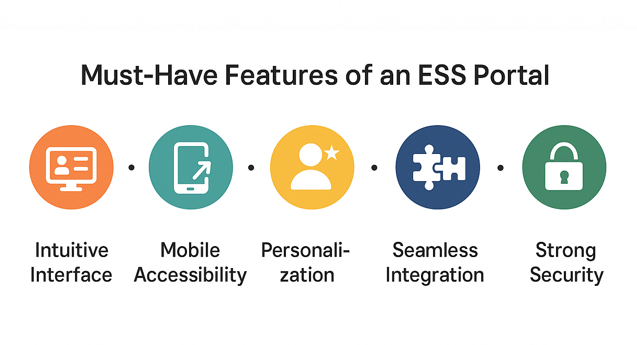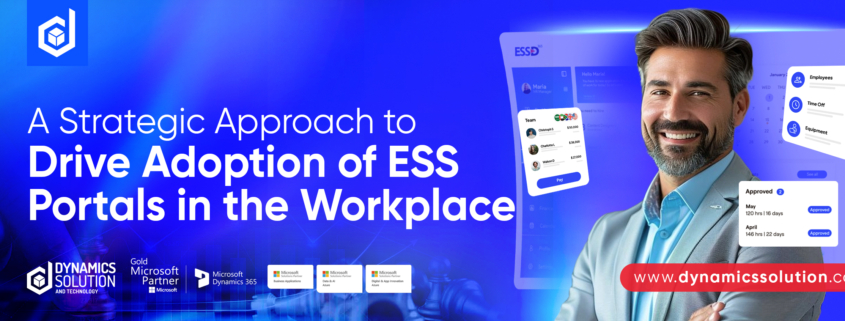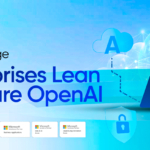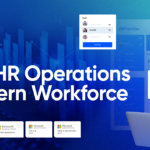Employee Self Service Portal (ESS) are reshaping how organizations manage HR functions. These portals reduce administrative bottlenecks and enhance overall efficiency by granting employees direct access to essential resources, like payroll information, benefits details, and policy documents. Yet, despite the clear advantages, ESS portals often encounter slow adoption rates, primarily due to employee resistance and inadequate implementation strategies.
In this blog, we’ll look at the resistance factors that inhibit ESS adoption and outline a comprehensive strategy to overcome them. We’ll also explore the essential features that make these portals truly effective. With the right approach, organizations can increase adoption rates and reap the full benefits of their investment in ESS technology.
Must-Have Features of an ESS Portal
To ensure long-term adoption, ESS portals must have user-centric features that address common pain points. Here are the essential capabilities every successful portal should offer:

- Intuitive Interface
A clean and simple design helps employees navigate the portal effortlessly. Key functions, like viewing pay stubs, updating contact details, and checking paid time off, should be accessible within a few clicks.
- Mobile Accessibility
In today’s flexible work environment, employees expect to access HR services from their smartphones. A fully responsive portal or dedicated mobile app ensures they can manage their information on the go.
- Personalization Options
Allowing users to customize their dashboards, set preferences, and receive tailored notifications makes the portal more relevant and engaging.
- Seamless Integration
The portal should integrate with existing HR systems, payroll software, and communication platforms. A single sign-on (SSO) capability further streamlines the user experience, eliminating the need for multiple logins.
- Strong Security Measures
Multi-factor authentication, data encryption, and strict compliance with data protection regulations reassure employees that their information is safe. A visible privacy policy and transparent data-handling practices foster trust.
Understanding Resistance to ESS Portal Adoption
Resistance to change is a natural human response, and introducing a new technology like an ESS portal is no exception. Recognizing and addressing the most common sources of resistance is critical to creating a robust adoption strategy. Before moving ahead, discussing why employees resist using the ESS portals is pertinent.
Fear of Complexity and Technological Change
Employees often perceive new systems as complicated and time-consuming to learn. Even tech-savvy employees may be reluctant to engage if the portal’s user interface isn’t intuitive or training isn’t available. This reluctance is amplified in industries where staff are accustomed to traditional, paper-based processes. A 2024 study published in the Journal of Organizational Change Management source found that 42% of employees delayed using new workplace technologies because they feared they would make mistakes or appear less competent.
Inadequate Communication and Training
Rolling out an ESS portal without a clear communication plan often leads to confusion and misinformation. Employees may not understand what the portal does, why it’s being introduced, or how it will benefit them. According to a recent survey by Gartner source, more than half of employees cited poor communication as the primary reason they failed to adopt new HR tools.
Concerns Over Data Security and Privacy
Trust is a significant factor in the adoption of any digital tool. Employees want to know that their personal information, such as pay history or medical benefits, will be stored securely and handled responsibly. When these concerns are not addressed proactively, resistance grows.
A Comprehensive Strategy to Drive Adoption
Overcoming these challenges requires more than a quick rollout and a training manual. It demands a well-rounded, thoughtful strategy that actively engages employees and reduces barriers to entry. Consider these key components:

1. Engaging Stakeholders Early
Involving key stakeholders: HR leaders, IT professionals, department managers and even a small group of employees—early in the development and selection process can significantly improve adoption rates. When employees have a voice in choosing or designing the system, they’re more likely to feel invested in its success.
2. Crafting a Targeted Communication Plan
Communication should be clear, consistent, and tailored to different employee groups. For example, the messaging to administrative staff who handle payroll may emphasize how the portal reduces their workload. At the same time, frontline employees may appreciate the convenience of checking schedules and benefits from their mobile devices. Using multiple channels: email updates, video walkthroughs, and live Q&A sessions, ensures everyone hears the same message and understands the portal’s value.
3. Offering Comprehensive Training
Initial training sessions are only the beginning. Continuous learning opportunities help employees stay confident and engaged. Offer user-friendly guides, short how-to videos, and an accessible helpdesk. Implement a peer-support model where “power users” within departments can assist colleagues. This approach builds confidence and fosters a collaborative culture around the portal.
4. Demonstrating Immediate Value
Showcase how the portal simplifies routine tasks, such as updating personal information, viewing pay slips, or requesting time off. When employees experience firsthand how the ESS portal saves them time and hassle, their resistance naturally decreases. For example, a company that reported a 50% reduction in administrative paperwork after launching an ESS portal saw adoption rates climb by 40% within the first three months.
5. Iterative Improvements and Feedback Integration
Adopting an agile approach—where employee feedback informs ongoing improvements—demonstrates that the organization values its workforce’s input. By refining the user interface, adding features requested by employees, and fixing bugs quickly, organizations build trust and encourage continued use.
Take a Lead
Adopting an ESS portal requires a multifaceted strategy combining stakeholder involvement, targeted communication, comprehensive training, and iterative improvements. Organizations can unlock significant value in efficiency, cost savings, and employee satisfaction and engagement by addressing familiar sources of resistance and implementing features that meet employee needs.
Ready to Build an ESS Portal Employees Actually Want to Use?
At Dynamics Solution and Technology, we don’t just build systems, we engineer adoption. From mobile-first experiences to intuitive interfaces and secure data workflows, our ESS solutions are designed to meet employees where they are and move them forward with confidence.
Let’s talk about building a people-first ESS platform that drives real engagement across your workforce.







